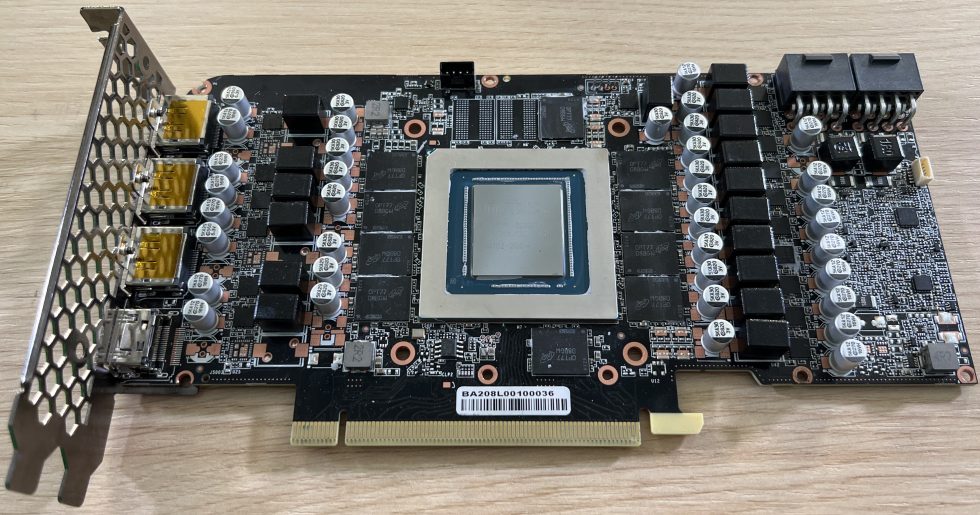Since people keep asking: Today’s test will once again show in measurement series how to properly apply a purpose-built thermal paste on large GPUs. The selection of a suitable paste and the appropriate method determine success or failure. And I’m not just making this up as I go along, because much of what is shown here in a manual application has already been implemented and used in a similar way by board partners for a long time. I have already mentioned it in my articles from time to time, but today I still want to show a final comparison of how different methods perform. Because the differences in the result are striking!
Causal research: Nothing is equal!
My formplot shows (of course somewhat exaggerated) the problem of a current GPU, no matter whether it is from NVIDIA (in the picture) or AMD. The larger the GPU, the greater the possible curvature of the die and BGA board. This happens for the most part during packaging and can hardly be avoided. But now we come to the example plot: The curvature of the die is here with 0.068 mm (according to NVIDIA within the specifications) still in the tolerable range, however, I also had a card with something over 0.08 mm. This can still be managed quite well with thermal paste, if it doesn’t turn out too liquid, and it only differs slightly from Turing in the end.
The package itself also always has decent tensions and certain height tolerances, which is all still completely normal so far. The following evaluation of the height differences shows exactly such a curvature and at the same time still a deviation of the actually measured heights from the 3D construction file available as a standard specification, which I have placed underneath as a direct comparison. You can also see very well the bending of the package and the underlying PCB of the graphics card. In this case, we can see that even the PCB still had to bend significantly due to the screwing in order to be able to make contact at all. This is already completely irreversible after cooling down from a heat phase (BurnIn)!
You generally have to be careful not to build up too much tension. Even my very carefully treated GPU of the reference board already has first signs of decay at the corners (see picture below). This is still completely uncritical to this extent, but it’s not really pretty and it shouldn’t become more so.
Cleaning properly is half the battle
I will now show you how and with what you can properly clean a GPU. The close-up shows the critical areas. While the large surface of the GPU is quite easy to clean (NO residues of old and other paste should remain here), the corners and edges already have a harder time.
When in doubt, it is better to leave some old paste behind than to allow too much mechanical action. Because here there are no chemical reactions to worry about that could interfere. Furthermore, the straps made of small SMD components next to the GPU are very sensitive to mechanical impacts. Since part of the hardware identifier is also encoded here, missing components would render the entire card unusable. And the parts fly off faster than is generally believed. So rather, as in the picture, just leave it on! With non-conductive paste (we don’t use any others anyway), nothing happens.
The coarsest stuff will first be carefully wiped off the GPU from the outside to the inside and collected. You can also use soft kitchen paper (fluffy!). The ear swabs can then be used to clean the edges all the way around and away from the chip, elegantly and without much pressure. Then you also do not come to the SMD components. Once you’ve done this part, take a soft cloth (won’t lint) and some isopropyl alcohol. Use this cleaner only after almost everything has been wiped away dry. Otherwise, all the cream will dissolve and creep into the last crack.
However, we apply the new paste only after the surface has dried completely. Which paste I prefer here and how to put it on correctly, I’ll show you on the next page.





































175 Antworten
Kommentar
Lade neue Kommentare
Mitglied
Mitglied
Veteran
Urgestein
1
Urgestein
Veteran
1
Urgestein
Mitglied
Urgestein
Mitglied
Urgestein
Urgestein
Veteran
Veteran
Mitglied
Alle Kommentare lesen unter igor´sLAB Community →